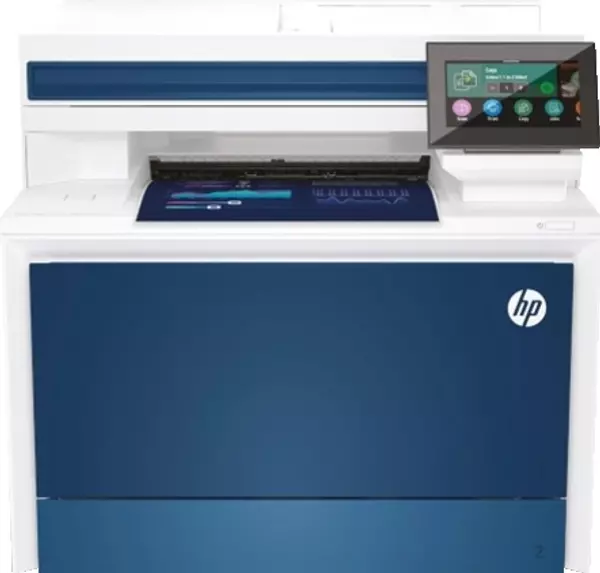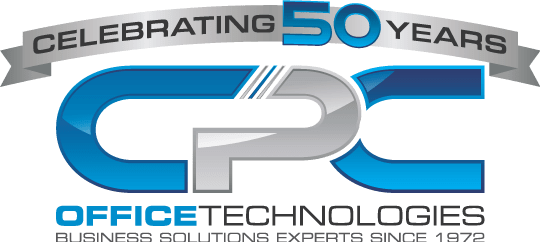Digital presses and related recurring revenue streams deliver more opportunities for growth and sustainability.
When it comes to production and industrial print, what began as a trickle could soon become a wave. Seeking to address the evolving dynamics of the print industry, some forward-thinking dealers are making one or both of two very strategic moves. There’s downside risk involved, but the upside is transformation to a more vibrant and valuable business that better positions a dealer for growth or acquisition.
One move for you to consider is adding production and industrial printing equipment to the range of entry- and mid-level copiers and printers you currently sell, service, and support. This requires upping your game and financial/operational agreements with OEMs, increasing the skills of your sales and service people, and is admittedly not the right fit for all dealers. But don’t let the size of your present operation be a barrier. Adding a broader range of equipment and software is not limited to megadealers or those with revenues north of say, $30 million. It the right markets, such as smaller cities and their suburbs, a competent, that an established dealer can give to an OEM as an entrée to markets it might not be able to access easily. But you, being local and with some established relationships, can have greater success. In some instances, you may be able to expand the range offerings from a vendor with which you already have a relationship.
The second move is acquiring an existing printing operation, broadening the range of customers and increasing the types of work being done. This lets a dealer present a new face to the market””that of a known and trusted dealer, combined with that of a print services provider that provides a broad range of services. Even in this digital age, there is plenty of room for many types of printed documents, often in low volumes and with tight turnarounds””a convergence ideal for digital printing. In some cases, it may clear the way for a range of documents that are not a good fit for the machines you currently sell. For example, an existing local printing business may have high-speed production presses or wide-format printers that provide capabilities that offer recurring revenue streams. Adding such capabilities can help differentiate your operation in ways that can make your company more attractive to buyers when you decide to cash out.
What is out there….
Just about every type of printing imaginable is now being done””and profitably””on digital presses. The “big three” are direct mail, general commercial printing, and a market-dependent mix of wide-format, wall covering, and textile printing. This goes far beyond the speeds-and-feeds stories of even just a few years ago. The latest toner and inkjet devices can do almost everything that was once the domain of big offset machines and their capabilities improve annually, if not faster.
A couple of things are driving the broad acceptance of digital presses. First is that print quality is no longer an issue. All the presses, from the least expensive to the priciest, do great work. Sure, the top models do better than the entry-level ones, but not many people are turning down a digital print for quality reasons. Next, as most print providers will readily admit, same- or next-day turnaround is the norm. Second, the “luxury” of having five to seven days between order and delivery for average jobs is long gone. The result is that inkjet and toner presses”” and the benefits they provide””are the norm for more and more jobs. There’s no going back.
…and what is being done with it?
Recently, I was doing a lap of America, shooting video and interviewing executives at multiple print operations, all of which had offset, toner, and inkjet presses. One had a pair of big eight-color presses, a mix of older toner boxes, and a new inkjet press.
“I have bought my last offset press,” announced the owner. “My next press goes here.”
He pointed to floor space in his climate-controlled digital print room, already marked out for a second Inkjet machine. His story was not unique.
Canon (See top of page)
Canon, by any standard one wishes to use, is perhaps the most pervasive and multifaceted company in imaging technology. From photography to medicine, to graphic arts, Canon is a key player in every segment it enters. Most Canon dealers are familiar with the company’s imagePRESS range of toner-based copiers and printers. While the smaller models have homes in small offices and lots of corporate hallways, the C8000VP and C10000VP top-end models are the production press of choice in a wide range of commercial print operations where their reliability and print quality lets them serve as replacements for what once were offset-only applications or relegated to other high-end digital presses.
Flexibility is a key part of the game with these top-of-the-line models, which can be configured to accommodate a variety of in-line finishing and binding choices. In addition, Canon offers PRISMA software, which puts many high-end workflow and job-handling capabilities in user’s hands.
For customers that need even more, Canon steps up with label printers, its Océ VarioPrint line of monochrome printers, Colorado and Arizona wide-format printers, and a comprehensive line of cut-sheet and continuous-feed high-speed inkjet presses.
HP Indigo
HP has a broad line of toner and inkjet presses for home and office environments, but when it comes to commercial printing, the Indigo presses are the ones that get all the attention. Their image quality is superb, and although they can be more expensive to operate, Indigo owners are still very busy and profitable, which may be the foundation of the almost cult-like following these presses seem to create. There is an Indigo for most budgets and applications, all the way from basic four-color printing to various packaging applications.
To cast a wider net (pun somewhat intended), HP acquired Scitex some years ago, enabling it to offer an ever-expanding line of wide- and large-format presses from machines specifically intended for repro shops and architects to devices meant for banners, vehicle wraps, textile printing, and more.
Konica Minolta
The AccurioJet KM-1 is an interesting beast. It delivers a 23 x 29.5-inch sheet sprayed with UV inks that provide rich, vibrant colors. In the KM-1 shops I’ve visited to date, the presses are being used for commercial printing, personalized direct mail, posters, and more. Business owners say customers are satisfied with print quality, the ability to do very short runs, like fast turn-around, and access to full variable data printing, which can be a game-changer for direct mail.
Konica Minolta has become a full-line vendor, offering its toner-based AccurioPress line both directly and through dealers. It has also stepped into the broader industrial and commercial space through its alliance with MGI, developer and maker of digital presses that provide a host of decorative capabilities such as textures and foils. Such features were once add-ons at commercial shops but can now be done in one pass on a digital press, even in a small quick-print shop. Cue the extra value and profits.
Then, there are labels. Konica Minolta has also rolled out a digital label press, which is poised to give owners of flexographic presses fits. Labels don’t seem like much to many printers, but when you consider the number of small, often local package goods producers””all of which need labels””a digital press becomes a compelling tool. Think craft beers, condiments, local wines, and other locally produced specialty products. FLEXO presses are really only economical for a few thousand labels, but a digital press can do a mere hundred and still make money. Adding Konica Minolta’s label press to your offerings lets your sales team call on a new range of customers.
While Canon has targeted every conceivable niche in the market, other players focus on key segments. For instance, Ricoh’s Pro series ranges from smaller machines through its C9200 and C9210 and C 7200 and C7210 models that can be configured to meet the needs of offices and CRDs all the way to commercial printers. Selecting the appropriate options on the C9200 line turns the press into a book production system, including covers or posters up to 49.6 inches long. Meanwhile, adding a fifth color and ColorLogic software to a C7200 turns on a host of capabilities you don’t expect to find on a moderately priced digital press.
Then there’s wide format. Ricoh’s wide-format printers come from EFI, but when teamed with Ricoh software and a computer-driven cutter, creating ready-to-use, large-size or uniquely shaped images is vastly simplified””and fast. There is money to be made here, for printers and dealers alike.
Xerox
Xerox has a robust line of machines for most market segments, and last year rolled out the Iridesse, which can employ up to six stations to provide white, clear, silver, and gold toners. The Iridesse works just fine for a normal four-color job, but adding the new colors lets a user add enhancements that can make the difference between ho-hum and wow. More interesting, though, is some of the software that runs behind the scenes. The company’s FreeFlow Core software has modules designed for Iridesse that enables jobs designed for just four colors to be almost instantly updated to use the clear, white, or metallic capabilities of the new press. The Iridesse is impressive but being able to take full advantage of it for older jobs sets the press and Xerox apart.
Money on the Table
There is money on the table here, whether it comes from adding to the range of products you sell and service, or by buying and enhancing the offerings of a local print provider. To be clear, there are no poor-quality presses or printers being made today. Every vendor is providing excellent products and it behooves you, as a dealer, to look holistically at your market and make the moves that will garner the best opportunities for your business today and in the future. Because this is business. And if you don’t address the needs of your market, someone else will.
Access Related Content
Visit the www.thecannatareport.com. To become a subscriber, visit www.thecannatareport.com/register or contact cjcannata@cannatareport.com directly. Bulk subscription rates are also available.
You're viewing Print for Profit, in a text-only format to view this issue in all its entirety please download it from our Past Issues page




